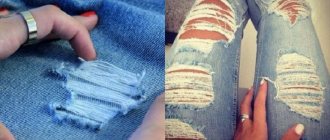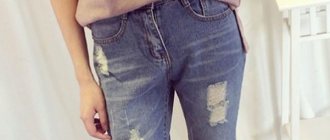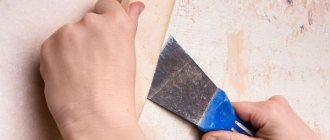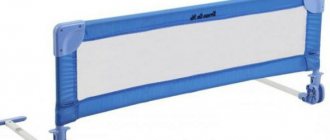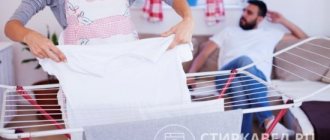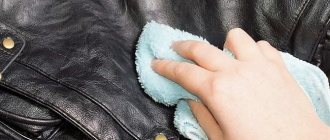Rating: 5/5 (3)
Any embroidery requires perseverance and painstaking work, but it will give the item a special personality. For beginners, you can start with cross stitch, satin stitch or bead embroidery. First you need to decide what you want to apply an ornament, pattern or decorative element to . What fabric is the chosen object for embroidery and what style do you want to stick to.
My own designer
Embroidered items are back in fashion, so without wasting time, you need to take that boring item out of your closet to turn it into a fashionable, stunning outfit.
To start, find a linen, cotton or wool item in your wardrobe made from a fabric with a simple weave. It is easier to create a pattern with your own hands. For decoration you can use soutache, floss, beads, rhinestones, ribbons.
How to make embroidery on clothes special and beautiful? It is necessary to comply with the specifics of the technology. When applying a pattern, try to maintain proportions so that your creation is one with the product, and does not exist separately from it.
If you need to decorate a rough fabric, then choose thicker threads and larger beads. Conversely, choose thin, elegant threads and small beads for light fabrics.
Be sure to check the threads for color fastness so that there is no disappointment from the work:
- soak the threads in water;
- wrap in white cloth, press;
- see if any stains have appeared;
If colored stains appear, there are ways to strengthen the paint :
- Lather them thoroughly with laundry soap;
- Immerse in very hot water, hold for 15 minutes;
- Rinse several times in cold water;
- Dip in a solution of vinegar and salt, boil for 5 minutes;
- Then rinse several times in water;
- Wrap in white material and press firmly.
Components for the solution:
- 1 glass of water;
- 1 tbsp. l. 9% vinegar;
- 1 tbsp. l. salt.
All girls love flowers. Turn your white blouse into a flower garden by decorating with threads that won't fade.
First steps
Start your creativity with cross stitch. Buy a cross stitch kit and practice. Having chosen a successful design, you can decorate jeans or a denim jacket with it, sewing on the finished ornament as an applique.
Then complicate the process by applying embroidery directly to the product itself. If you do embroidery not on the finished product, but before sewing, then before cutting it is better to wash the fabric to prevent the design from skewing.
Specialized stores sell soluble canvas . With its help you can easily complete any drawing:
- Baste the canvas to jeans or a blouse.
- Using the diagram, embroider the ornament.
- After finishing the process, place the embroidered area in water for 10 minutes. During this time, the canvas will dissolve, leaving only the threads.
- Remove the threads.
There is also an overlay version of the canvas, woven from thick threads in the form of large, rigid cells. Like the soluble one, baste it to the fabric, and remove it after work: take tweezers, pull out all the threads one by one.
To ensure easy removal of threads, do not sew them to the fabric while working.
How to cross stitch for beginners?
Cross stitch is one of the easiest to learn, and the result is beautiful from the first time. For beginners, we recommend purchasing a ready-made set, which includes:
- canvas;
- one or two needles;
- floss, selected according to the color scheme;
- instructions.
Experienced craftsmen also love such sets, as they offer a wide variety of patterns to suit every taste.
You can find and embroider reproductions of paintings by Repin or Van Gogh, and create an original still life. And all this without having to look for a reference (sample drawing), work it out, select threads, or count the number of crosses in each row.
The secret of cross stitch is that all stitches should face the same direction. Otherwise, the finished work will not look solid.
Bugle bead relaxation
Bead embroidery has its own nuances. For beginners, it is better to use thin tracing paper to transfer the design onto fabric:
- Draw a drawing on tracing paper.
- Place it on the fabric.
- Sew with large stitches.
- Embroider the pattern.
- At the end of the work, carefully tear the tracing paper and remove the basting.
Many designers create extremely exclusive items, embroidering them by hand with beads and glass beads. Embroidery looks especially beautiful on black or blue velvet and generally on clothes in dark shades. If it is difficult to embroider the product itself, then you can embroider a piece of fabric and then sew it on as an applique.
But a simple gray T-shirt has become a work of art!
Rhinestones, pearls, bugles will even turn an office shirt into an original outfit.
A cascade of beads is real craftsmanship!
How to embroider flowers with beads on a shirt: step-by-step guide
And this section of the article will be of interest to those who want to stand out in the office, at the university or at business meetings. Are you wondering how to embroider a shirt with beads, creating a stylish and laconic flowerbed from it? So, prepare beads, sequins, fishing line and a needle for bead embroidery. And, of course, the shirt itself!
How to embroider flowers with beads on a shirt:
- First of all, lay out your shirt: decide whether you will wear it for graduation or tuck the bottom into a skirt or trousers? If you are going to tuck it in, try it on and mark the place that will go down so that you don’t sew flowers on the belt line and below.
- Now place one bead on one shelf (marking where the flower will be) so that the distance is uniform and harmonious.
- Make a mirror pattern on the second side. Step back and see how everything looks. If you like everything, mark it with a pencil or washable marker and these dots will become the core of the flower.
Step-by-step master class on shirt bead embroidery
- The next step is to place flowers made of beads and sequins on the table so that they are of several types, but are in harmony with each other. If you are just starting your creativity, repeat our options.
- Stretch the shirt over the hoop and sew on the flowers. Thread the thread and carefully cut from the wrong side. Try on the shirt and look in the mirror - do you like everything? If so, fasten the buttons, turn inside out and wash on a delicate cycle.
Try on the finished product and don't forget to show off on Instagram, because we all love approval!
Embroidery techniques
There are many stitches for working with beads, but the most popular stitches are: lowercase and stem.
Seam “Forward needle”
- the needle is brought out to the front side;
- a bead is strung on it;
- pass the needle through the fabric close to the bead;
- again the needle is brought out to the front side;
- make a small stitch from the wrong side;
- Re-attach the bead.
Lowercase seam
This stitch is similar to the Forward Needle stitch. But to firmly fix the bead on the line, after completing the stitch, the following maneuver is performed: the needle is inserted in the opposite direction.
Stalked seam
To get a more rigid pattern, cast on 2 beads, pass the needle through the fabric on the wrong side near the 2nd bead. Bring the needle to the face between the 1st and 2nd beads, pass through the hole of the 2nd bead. Place the 3rd bead and again go through the needle on the wrong side near the 3rd bead. Continue until the stitch reaches the desired length
Types of stitches
To start embroidering, you need to become familiar with the types of stitches used in the process. There are several of them, each differing in technology and type of application:
- The chain stitch is the most common and is a loop stitch, machine or hand stitch. Sometimes called a chain stitch, you will need a chain stitch or needle to perform it. From the starting point, point the needle to the left, loop the thread under the tip from right to left. Pull the thread through the fabric, again point the needle to the left to the second point, pass through the loop, lead to the third point, place the loop under the tip of the needle. A variation of the stitch - fastened: repeat the first step, pull the thread and secure the loop with a small stitch, make 5 stitches in a circle (you will get a “daisy” pattern).
- Lingette (overcasting) - included in the group of loop stitches, they are distinguished by close placement to each other with the formation of a tight “ribbon”. The fabric is visible between each vertical stitch. Execution process: from the starting point through the second, draw the needle to the third point, which will lie to the right of the starting point. Pass the thread under the tip of the needle from left to right, pull the thread, rise to the fourth point (located close to the right of the second), bring the needle to the fifth point, placing the thread under the tip of the needle. Embroider in rows with tight, even stitches.
- Crossed - sometimes called moss, Persian, Russian, goat or witch. Refer to the group of crosses: from the starting point, pass the needle through the second point to the third, make a cross with a cross of threads at the bottom. Repeat on the other side.
- Herringbone - a loop stitch to create a light ornament. Other names are feather or rosehip. From the starting point, move the needle through the second to the third point, pull the thread under the tip of the needle to the right, bring the needle to the left, repeat pulling the thread twice.
- A running stitch is a simple linear stitch made at intervals equal to or nearly equal to the length of the stitches. Through the second point, move the needle to the third without pulling the thread through the fabric, bring it through the fourth point to the fifth, pull the thread without pulling the fabric. Try to make the stitches even and the same length.
- The cross stitch is the second most popular stitch, otherwise called the Prussian, patterned or printed stitch. It can be done at any scale and at any angle. From the starting point at the bottom right, draw the thread diagonally to the second point in the top left corner, from the top right point, draw the thread to the bottom left. Repeat with even stitches at equal intervals.
- Lowercase - similar to machine stitching, used for a clear outline. It belongs to the group of straight stitches, similar to the “back needle” and Holbein stitch. The work begins from the lower right point by pulling out the threads. Sew a series of small line stitches to create a line.
- Stem - a contour stitch from a group of straight lines. It is distinguished by graceful, partially overlapping lines with a smooth, raised tip. Bring the needle through the second point over the working thread, pull the thread, holding it under the needle, and finish the stitch.
- Satin stitch is the main stitch for embroidering flowers, otherwise called damask. Place the stitches close to each other, bring the threads from bottom to top from right to left. Make sure that the edges of the motif are even, stretch the threads for a smooth design.
- Knot (bead, French dot, lace knot, rococo) - performed separately or side by side to create a soft outline, embroidering the center of the flower. At the starting point, wrap the thread around the needle counterclockwise, holding the needle over the fabric, and repeat. Gather the twists together, move the needle to the tip, insert it into the fabric close to the starting point.
Step-by-step embroidery for beginners
Try decorating a plain T-shirt. For a more rigid fixation, you will need non-woven fabric, slightly larger in size than the embroidery itself.
Mark the boundaries of the drawing with chalk.
Glue interlining to the wrong side.
To start, choose simple designs with repeating motifs.
Sew the first motif in the center of the sleeve.
Just a few motifs and an exclusive item in your wardrobe!
Having learned how to depict a simple motif, move on to working with glass beads, beads and beads at the same time. Beautiful patterns from a casual blouse or dress will make a luxurious holiday outfit.
Motives for creativity.
The Butterfly pattern is the most expressive motif for velvet.
Pearl beads and green beads will come in handy here. First, embroider leaves and twigs, sew beads for the “clusters,” then surround them with a bright outline.
Brief historical background
The birthplace of this needlework is France. It is believed that back in the 14th century, craftsmen decorated the outfits of French nobles with elements of soutache.
Motifs made using this technique could also be purchased separately for personal decoration of dresses. Peter the Great brought soutache embroidery to our country. Today it occupies an honorable place in the art of clothing decoration.
Machine embroidery on clothing and logo embroidery
Modern embroidery helps professional craftsmen mark their creations with a custom logo. The logo increases the significance of both the item itself and the craftsman. In a period of fierce competition, this technique becomes very important , since it gives individuality to the product, distinguishing it from the crowd.
Advantages of machine embroidery:
- Ability to produce the smallest patterns.
- Use of a wide range of threads.
- Highly durable embroidered logo.
- The quality of the fabrics doesn't matter.
- Playback speed and image quality.
- Work without failures.
Handmade work has always been highly valued , but many craftswomen are increasingly making large ornaments and complex images using a typewriter.
Embroidery applique can also be created using a machine:
- apply the pattern to the fabric prepared for appliqué;
- make a simple stitch along the contour to secure it;
- cut out excess fabric around the stitched element;
- sew the attached edges of the appliqué with a machine seam;
- Sew the finished decoration onto the clothes.
I advise you to look at the diagrams
Regardless of whether the needlewoman will perform computer embroidery or do manual work, she will need diagrams. It is worth considering the simplest and most unusual options.
Machine stitch
Do you have a special machine and want to try all the embroidery techniques? Program it on the surface to get an original thing.
Advice from experienced craftswomen:
- place the drawing on tracing paper;
- sew the outline manually or on a machine;
- break the pattern into sections to make it easier to embroider even the most complex pattern; start the car.
Experienced embroiderers will be able to realize the most imaginative idea!
In this dress you will conquer all the men in the world!
The realistic image will retain its unchanged appearance even after many washes.
Fashionable embroidery will decorate not only clothes, but also hats or belts.
Immense space for interior decoration.
To create an exclusive item, take the advice of experienced embroiderers: first embroider the material itself, and then sew the product.
Machine embroidery will decorate even small details of clothing: collars, pockets, cuffs, sleeves. You can revive dresses, skirts, and jeans with original patterns.
As a motif, you can use your own photographs or photos from magazines, images drawn by your child’s hand. Delicate flowers will enliven the most boring outfit .
It is fashionable to apply family coats of arms on underwear, bathrobes, tablecloths, slippers, napkins, and sofa cushions.
DIY French chic
The delicate cutwork web looks more like lace than embroidery. To buy a fashionable item you need to shell out a large sum of money. To get an incredibly sophisticated new addition to your wardrobe, you just need to work hard.
A distinctive feature of cutwork is that individual details of the motif need to be cut out . First, try making napkins and pillowcases, and then move on to more complex things. The embroidery process will completely captivate you, so there is hope that this exquisite piece will soon decorate your summer wardrobe.
For work, choose natural fabrics. Beginning needlewomen, pay attention to calico, satin, and thin linen. Choose silk or cotton threads. The thread color can be any. Many embroiderers use threads of the same color as the warp.
You will also need embroidery needles, a hoop, sharp scissors, a water-soluble fabric marker (or a simple pencil) and a template . Before starting work, the fabric must be wetted with water, dried, ironed well, that is, decated.
Let's begin the process:
- Secure the base with a hoop.
- Sew the outline of the motif using a “forward needle” seam.
- Fill the entire pattern with satin stitch. A shady surface is best suited.
- At the end of the work, secure the thread by inserting it under the last stitches.
- In the center of the elements highlighted in the diagram, we make crosswise cuts and open them.
- Then carefully cut close to the edge.
- Let's make bridges - openwork jumpers between parts of the motif.
- Let's steam the product using an iron with a steam generator.
To decorate the product you can use beads, ribbons, rhinestones .
Scheme "Lily"
- Sew all the lines with a needle-forward stitch.
- Use satin stitch to fill the double outline of the pattern and the stamen of the lily.
- Then do the breeding. To do this, you need to lay the threads 2-3 times over the fabric that we cut out, securing with stitches.
- Sew the brid with a buttonhole stitch.
- Use sharp scissors to cut out these pieces without damaging the stitches themselves.
Floral motifs can be created using a sewing machine:
- Topstitch all lines with a simple stitch.
- Embroider the necessary elements using satin stitch.
- Make brids, cut holes with sharp scissors close to the edge.
Benefits of soutache
Using soutache cord to decorate elements of outfits has the following advantages:
- The ability to create patterns and ornaments that are impressive in their beauty.
- Variety of design solutions.
- The voluminous outline of the embroidery allows it to emphasize the fabric pattern.
- No need to use complex materials and tools.

